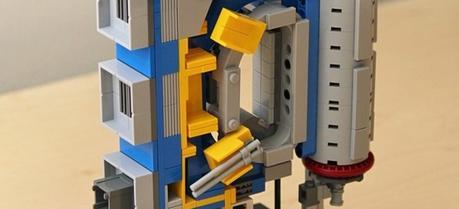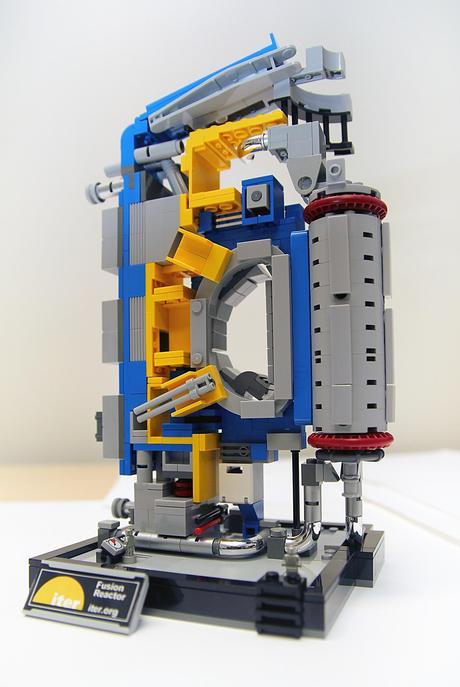 (Credit: Andrew Clark)
(Credit: Andrew Clark)
Andrew Rae Clark, a fusion energy enthusiast from Baltimore, MD, who works as a Senior Artist in a video game developer company, has built a 498-part model of the International Thermonuclear Experimental Reactor (ITER) from Lego pieces.
The model thermonuclear reactor was created in a LEGO Digital Designer (LDD) program that allows users to build models using virtual LEGO bricks, in a computer-aided design (CAD) like manner. The model has 498 parts including two micro figures for a sense of scale and detail. Now, Andrew uploaded his model to Lego Cuusoo, a website where people submit ideas for Lego products to be turned into potential sets available commercially, and asks the community to support his idea.

The ITER Lego model (front view). (Credit: Andrew Clark)
“I recently started getting back into Lego. I was impressed by the creativity, and quality of the designs. I came across the Lego Cuusoo Site, which enables people to submit their own designs, to potentially become an official Lego set. I started to think of ideas. I enjoy science especially cutting edge Science. I already had heard of ITER being built, and the idea that we can create Fusion, the process that powers the stars inspired me to try designing a Lego ITER set. I’d love to think ITER employees, would have the set on their desk, or for that matter anyone who is interested in science and Lego,” said Andrew Clark, in explaining the reasons behind the idea.
Surprisingly, the process of modeling the ITER from Lego is somewhat similar to the design and construction process of the actual thing, as ITER engineers are now using virtual reality CAD software to check the design of mechanical and plant systems or certain construction features.

The ITER Lego model (rear view). (Credit: Andrew Clark)
ITER (originally an acronym of International Thermonuclear Experimental Reactor and Latin for “the way” or “the road”) is an international nuclear fusion research and engineering project, which is currently building the world’s largest experimental tokamak nuclear fusion reactor adjacent to the Cadarache facility in the south of France. The ITER project aims to make the long-awaited transition from experimental studies of plasma physics to full-scale electricity-producing fusion power plants. The project is funded and run by seven member entities—the European Union (EU), India, Japan, China, Russia, South Korea and the United States. The EU, as host party for the ITER complex, is contributing 45% of the cost, with the other six parties contributing 9% each.
The Daily Fusion has a news feed on the ITER project available here.

